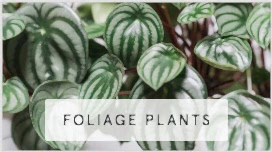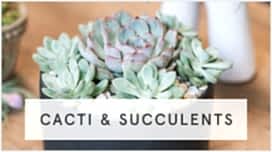Houseplants are popular for so many reasons. They bring joy to your living space, infusing your home with a touch of Mother Nature’s brilliance and reminding you of the general goodness associated with greenery.
Of course, they require some regular care and maintenance to stay that way. If left neglected for too long, they will eventually wither away. Several culprits could be to blame if your houseplants stop growing, and just being mindful of what they are can help you cultivate a healthier indoor jungle that prevails.
That’s especially true if you feel like you’re taking all the right steps for the benefit of your houseplants. It’s important to know that this is a surprisingly common issue and that you aren’t alone in your mission to prolong your plants’ lives and help them grow more robustly. Here’s what may be to blame — and how you can give your houseplant a growing boost.
The Dangers of Nutrient Loss
Usually, houseplants fail to grow when they begin to lose nutrients. Unfortunately, “nutrient” can be something of a difficult term to define for the average gardener. The term doesn’t solely refer to fertilizer application, either. If the plant doesn’t receive an adequate amount of water or light, then it will simply hold onto and consume all of its energy and resources just to survive.
Think of it as a red flag for your plants — they go into a fight or flight mode as they struggle to remain alive, and eventually, you’ll notice indications of failure like leaf loss, discoloration, and wilting. This is why it’s so critical to understand precisely what your specific plant needs to thrive.
How Pest Infestations Cause Damage
Another concern could be a pest infestation. This is troubling for several reasons, not the least of which is the fact that the pests are inside your home and taking up residence on your houseplants. How can you determine if the issue is related to these unwelcome and all too pesky critters?
Often, the leaves will change both in texture and color. They may take on a mottled, speckled, or dotted appearance. Eventually, they may also appear misshapen, straying away from their conventional leaf silhouette. You might notice they begin to take on a cup-like look instead. Infected leaves could also have webbing at the base.
Certain insects may produce honeydew, a glossy finish that remains on the leaves as they begin to spread. The honeydew is sticky and drippy, and it can actually migrate to other parts of the plant. Plus, it may spur mold to develop and create black, unsightly smudges on the leaves.
If you detect any of these signs, look closely at your plant for signs of a pest infestation. Insects may be hiding underneath the leaves, for example, or even clustered in a single area or hiding at the point where the leaves meet their stems.
Why a Single Pot Could Be to Blame
When a houseplant becomes “root-bound,” it simply doesn’t have any more room to grow. That’s different than a specific problem that affects the plant’s health, but instead, one that suggests the plant is too mature for its original container. Since the roots need space to develop, the plant will become root-bound if that space isn’t available.
Instead, the roots will attempt to push their way through the drain holes at the bottom, and they may even grow over the side of the pot. Plus, they’ll try to grow inside the pot, usually forming a continuous circle that wraps around the walls.
As a result, the soil can’t hold onto moisture, eventually killing off the roots and, ultimately, the plant entirely. You can try to restore a root-bound plant by using a knife or trowel to cut through the roots, which can help the plant thrive if you then plant it in the garden. Or, if you’re keeping it inside your home, you can plant it in a new container.
Inadequate Sunlight Can Affect It
Any type of plant requires sunlight for the vital photosynthesizing process. Some houseplants indeed have very minimal lighting needs, while others require bright, indirect illumination to support growth without causing damage to the leaves. Keep in mind that while most plants prefer bright light, they usually shouldn’t be placed directly in the path of the sun.
If you don’t have large windows or you’re concerned that there isn’t enough lighting available in your living space for your houseplants, you can use a grow light to provide them with the light that they need. If that’s not a possibility, you could definitely make good use of a beauty like the ZZ Plant — it’s an easy-care, low-maintenance option that doesn’t require much light to look its best year-round. You’ll feel like you’ve been doing this all your life!
How Infrequent Watering Impacts Growth
Just like all living things, your houseplants require water to stay healthy and vibrant. While some plants, like succulents, tolerate dry soil well (keep in mind they have fleshy leaves), the majority of houseplants don’t perform well unless the soil is moist. However, there is such a thing as too much water, too — you don’t want to be too overzealous with this step, or you risk an issue known as root rot. That’s usually a case that can’t be resolved since the roots simply become too saturated to salvage.
To ensure you’re watering at the right pace, simply insert a finger about an inch into the soil. If it feels wet or damp, you don’t need to water it just yet. If it feels dry or coarse, it’s time to water the soil. It’s a good idea to make sure of your plant’s specific watering needs from that point, so you can stick to a schedule that works — or select a plant that meets your own scheduling needs instead.
With proper care and maintenance, you can be certain that your houseplants will grow and add just the beauty and personality that you hope they will to your home. It’s one of the greatest benefits you’ll receive in return for your efforts.













